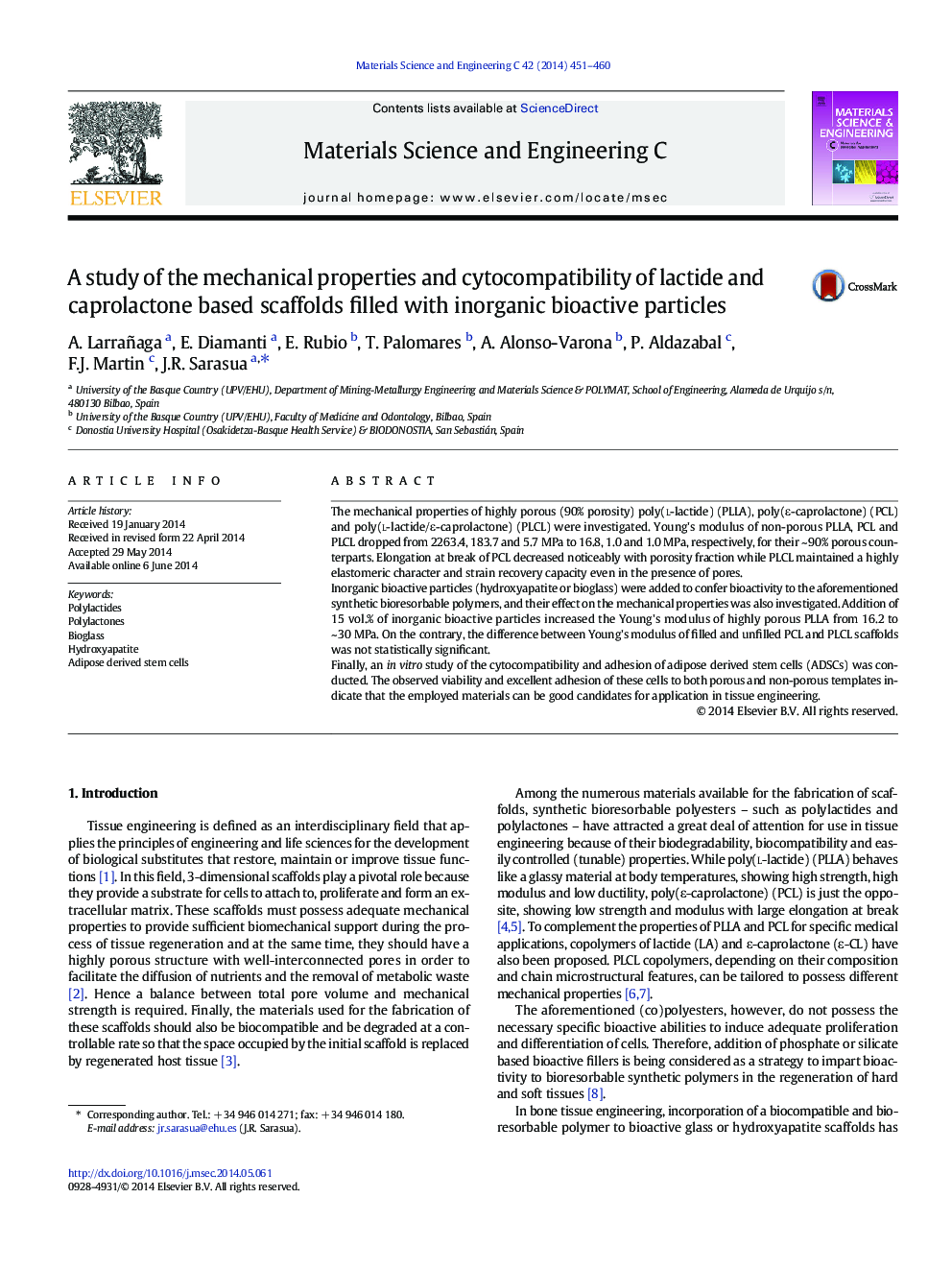| Article ID | Journal | Published Year | Pages | File Type |
|---|---|---|---|---|
| 1428657 | Materials Science and Engineering: C | 2014 | 10 Pages |
•Mechanical properties of porous PLLA, PCL and PLCL matrices were investigated.•Young's modulus of samples with bioactive fillers was foreseeable mathematically.•The employed materials were non-cytotoxic according to MTT assay.•ADSCs presented excellent adhesion to the porous and non-porous templates.
The mechanical properties of highly porous (90% porosity) poly(l-lactide) (PLLA), poly(ε-caprolactone) (PCL) and poly(l-lactide/ε-caprolactone) (PLCL) were investigated. Young's modulus of non-porous PLLA, PCL and PLCL dropped from 2263.4, 183.7 and 5.7 MPa to 16.8, 1.0 and 1.0 MPa, respectively, for their ~ 90% porous counterparts. Elongation at break of PCL decreased noticeably with porosity fraction while PLCL maintained a highly elastomeric character and strain recovery capacity even in the presence of pores.Inorganic bioactive particles (hydroxyapatite or bioglass) were added to confer bioactivity to the aforementioned synthetic bioresorbable polymers, and their effect on the mechanical properties was also investigated. Addition of 15 vol.% of inorganic bioactive particles increased the Young's modulus of highly porous PLLA from 16.2 to ~ 30 MPa. On the contrary, the difference between Young's modulus of filled and unfilled PCL and PLCL scaffolds was not statistically significant.Finally, an in vitro study of the cytocompatibility and adhesion of adipose derived stem cells (ADSCs) was conducted. The observed viability and excellent adhesion of these cells to both porous and non-porous templates indicate that the employed materials can be good candidates for application in tissue engineering.
Graphical abstractFigure optionsDownload full-size imageDownload as PowerPoint slide
